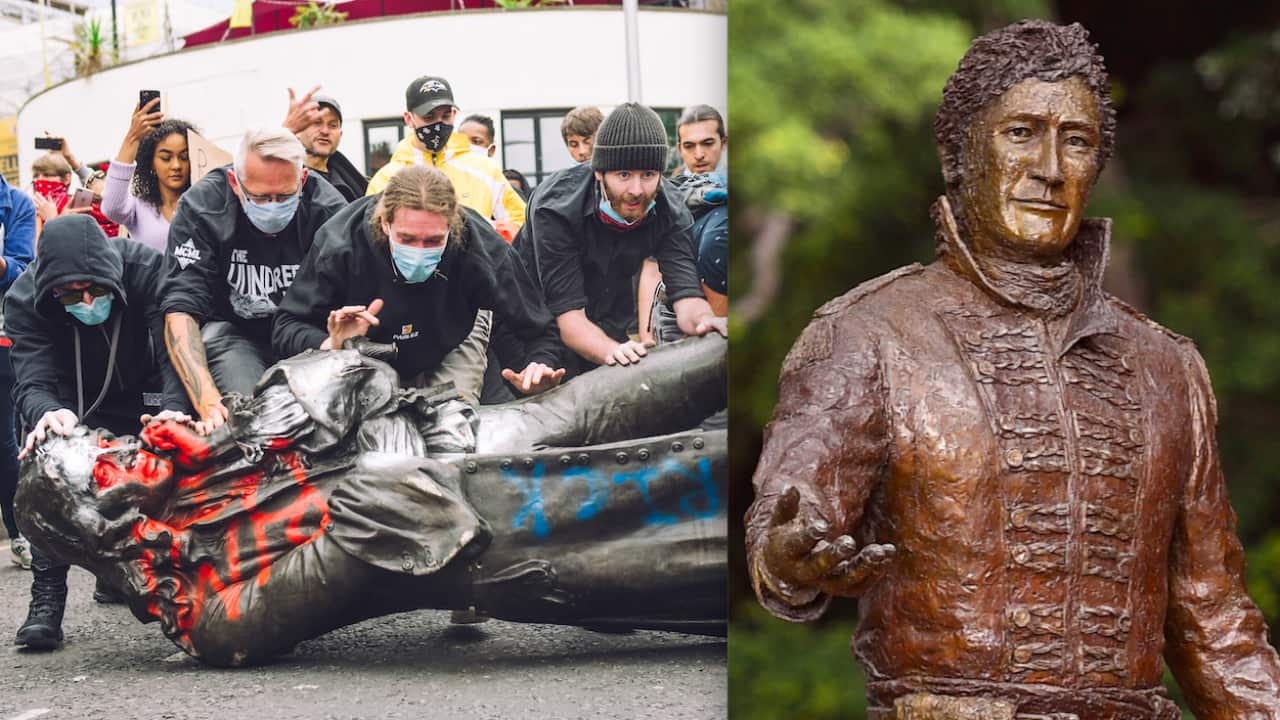Bronze statues of Aboriginal leaders Bennelong and Barangaroo have been unveiled in Sydney.
The busts, which frame the door at St Patrick’s Catholic Church in The Rocks, were unveiled by NSW Governor Margaret Beazley who urged Australians to gain a greater understanding of their achievements.
Husband and wife and leaders of the Eora people, Bennelong and Barangaroo were communicators and mediators between their people and the British in the late 18th and early 19th century.
Ms Beazley said: "If you haven't already done it, can I say embrace it [the history and culture] because there is a sacredness in the Aboriginal culture of which we have been deficient in our understanding over the years." Eora woman Theresa Ardler, who was consulted during the development of the sculptures, said she cried when she saw them unveiled for the first time.
Eora woman Theresa Ardler, who was consulted during the development of the sculptures, said she cried when she saw them unveiled for the first time.

The bronze busts were unveiled during a ceremony on Sunday. Source: AAP
"It was a very emotional time for me, but happy to see my ancestors of Eora nation being acknowledged. It makes me very proud indeed."
As the director of Gweagal Cultural Connections, Ms Ardler teaches school children about Aboriginal spirituality and culture.
But she recalls being at school and Indigenous history not being taught at all.
"Myself as an educator and artist, this would be a great way of connecting schools. To come and witness up close what they look like. Feel and touch, and wow - their spirits are right here." "More than a mediator and interpreter, he [Bennelong] connects 21st century Australia with the social and spiritual Aboriginal world that existed before the English colony of New South Wales," Ms Ardler said.
"More than a mediator and interpreter, he [Bennelong] connects 21st century Australia with the social and spiritual Aboriginal world that existed before the English colony of New South Wales," Ms Ardler said.

Ms Ardler says the bone in Barangaroo's nose signified her status as leader of the Eora people. Source: SBS News
"Barangaroo was independent, strong and wise - a proud statement of her spirituality and culture."
There are at least 25 publicly funded statues of colonial figures around the Sydney CBD, including in Hyde Park.
The list includes Captain Cook, Governor Arthur Phillip, Lachlan Macquarie, Queen Victoria and explorer Matthew Flinders.
In recent years, some of the statues have been vandalised as Black Lives Matter protests erupted in Australia and overseas.
Ms Ardler said having Indigenous leaders honoured with a statue is important and significant.
She added: "They connect us spiritually [and it sends a message] that our culture is not something of the past. It is something that is very much of the present and the future.
"This is the starting point of a change in history in regards to First Nations Australia, and I think it is a great way of moving forward."
The Parish Priest at St Patrick’s, Father Michael Whelan, said the statues honour an Indigenous legacy that all Australians and tourists should know about.
"It is a reminder to everyone who comes here that they [Bennelong and Barangaroo] are not an addendum, an afterthought," he told SBS News.
"They are absolutely crucial to us understanding ourselves as our people - and that applies to the Catholic Church too."
Brian Davies, formerly of Catholic Weekly, attended the ceremony. He said the hope is that more Indigenous leaders are honoured with statues around Australia.
"It sets the pace for something similar to be done throughout the rest of the continent."
Sculptor Roger Apte said the story of the Eora leaders was inspiring.
He added: "Barangaroo and Bennelong were a married couple who lived in a time of great and violent change for their world. And they faced the ravages of multiple pandemics introduced by the European colonists.
"I hope you are able to spend time with each of these portraits, see what is written in their faces, and consider with your mind and heart the significance of their lives of these two people, their time and consider their relationship with us."


